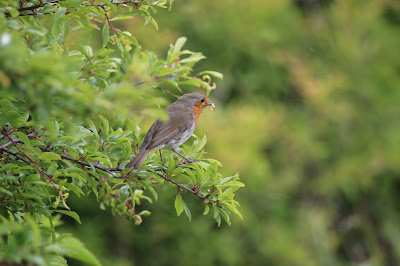Twenty posts later and with nearly 2,000 page views but no comments - thanks I think to 'blogger.com's' annoying insistence that those wanting to leave a comment set up a Google account first - I approach the end of the year. I wrote my first blog in April, describing my fruitless search in the Groβer Graben for Montagu's Harriers and, thereafter, my ornithological activities throughout Saxon Anhalt, Dorset and, finally this autumn, in Cyprus. Along the way I have seen many wonderful birds and discovered some great country - the Elbe valley springs to mind. I have in Cyprus also witnessed appalling barbarity. Man's inhumanity to man is well-documented, but his neglect of the environment and unkindness to God's birds and beasts sometimes has to be seen to be believed - and usually all in the pursuit of money.
 |
| Barnacle Geese in Feb - Roden Hive, the Fleet, Dorset, England. |
 |
| Dark-bellied Brent Geese in Feb - Roden Hive, the Fleet, Dorset, England. |
 |
| Bonaparte's Gull (flying) - Radipole Lake, Weymouth, Dorset |
 |
| Goldcrest - Radipole, Dorset |
 |
| Robin - Lodmoor, Dorset |
 |
| A baby Coot hoping not to be eaten by a Pike! - Lodmoor, Dorset |
 |
| Flood plain landscape around Jericho, Elbe - note the tall grass and small lake middle right |
 |
| Black Tern - Jericho, Elbe. |
Two special birds that had grabbed my attention by the fact that they bred locally were Hoopoes and Bee-eaters. I'd seen the later before in Germany but only fleetingly and so find and visit a colony less than an hour away thereby securing this most beautiful of birds as a regular local, was actually quite special. Little did I know at the time that I would end up seeing them quite frequently as the summer progressed hawking across reed beds at Frose. For my Hoopoe, however, I had to work quite hard. I knew the rough location - the Orainenbaumer Heide - a huge area of heath and young forest, but not the detail and so it was with eventual relief that I came across a bird. Next year I'll need to spend more time here in order to watch and study them better. I should also mention the fantastic male Goshawk I saw pitch perfect against a bright blue sky.
 |
| Bee-eater - Osmarsleben. |
 |
| Hoopoe - Orainenbaumer Heide. |
 |
| Male Goshawk - Orainenbaumer Heide. |
 |
| Female Blackcap or 'ambelopouri' about to be released by a CABS volunteer. |
 |
| Clockwise from bottom right: a dead Ortolan Bunting, Red-backed Shrike, Wood Warbler, Blackcap, Chiffchaff, Lesser Whitethroat and Great Reed Warbler |
The autumn has been quiet and, living in the middle of the central European land mass, bird migration is more difficult to note than in, Dorset where migrants concentrate in places like Portland before flying south to France. What is always notable, however, is the passage of thousands of Cranes. I observed my first birds at the end of August and saw my last on 27 November near Weimar passing south in a wintry sky. The only other record of note was a probable Lesser-spotted Eagle flying south west low across the countryside east of the Harz. Summer here passes more with a whimper than with a bang - thousands of migrants must pass through - but on a broad front and therefore largely unseen.
 |
| Migrating Cranes and an aircraft's vapour trail, near Weimar. |
| Wulfener Bruch landscape in winter. |
So that was the year that was. If anyone wants advice on any of the sites I have visited, please get on touch and I'd be very happy to share my secrets. A Happy Christmas and successful New Year to you all.